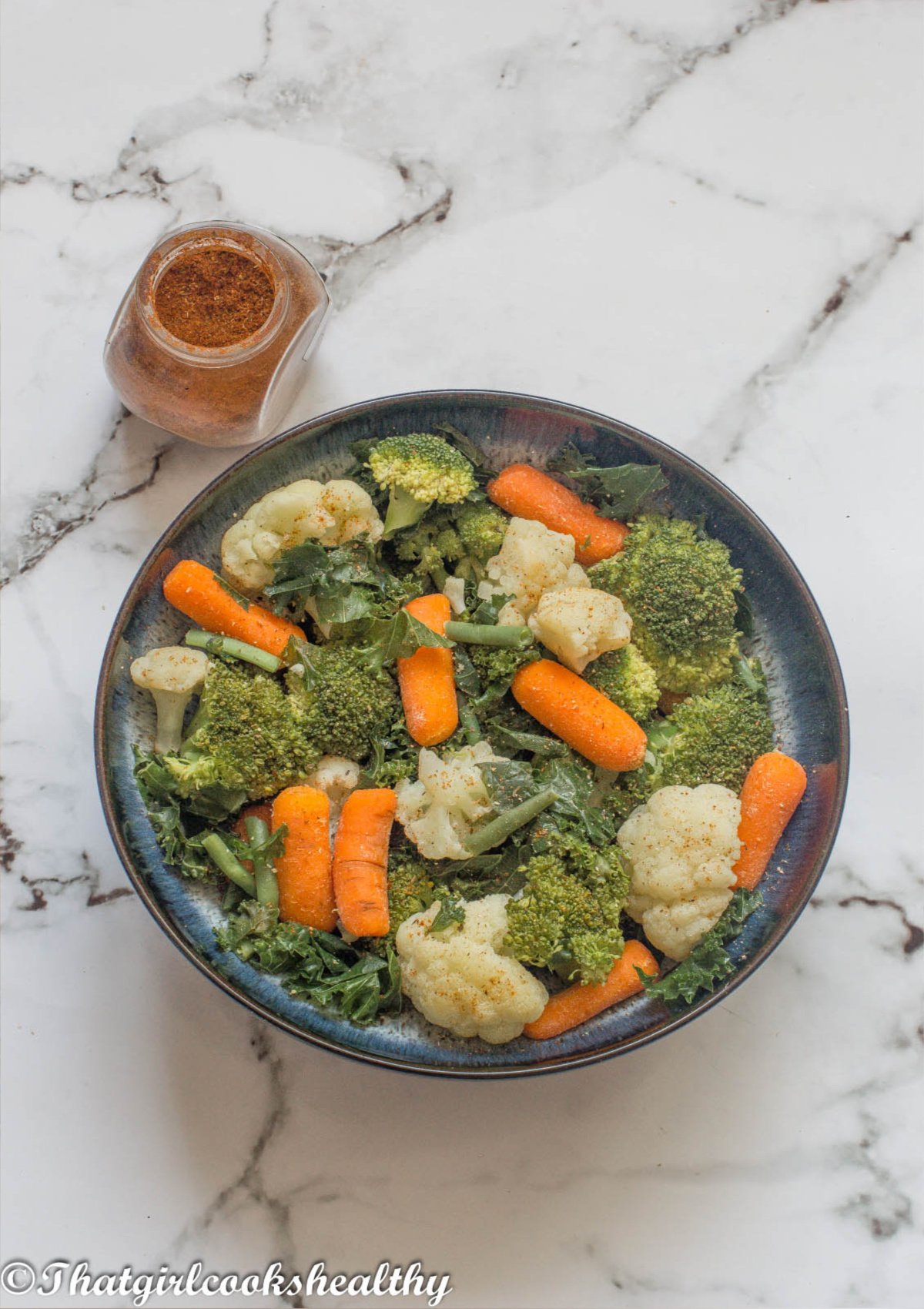A tutorial on how to steam vegetables, a quick and simple method to cook your vegetables while retaining their nutrients. It doesnt even include using any fancy kitchen gadgets.
This isnt a recipe post per say, but rather a tutorial post on how to steam your vegetables.
If you have been following my recipes for a while or from the beginning of my blogging journey, then you are going to see the shift from boiling to promoting steaming where possible.
Of course, there are exceptions to the rules i.e dumpling not sure if this one would work out for my Caribbean dishes (I will definitely test it out at some point).
Cover the pot and turn the heat to medium. When you hear the water boiling or see steam coming out, you’re ready to start. Add your food, re-cover the pot, and let it cook according to the recipe (or your liking).

Other methods – Covered pan
- Choose a pan/skillet that is large and deep enough to hold the vegetables of your choice with a matching size lid.
- Fill the pan/skillet with a small amount of water about ¼ or less. The water should be shallow, just enough to create steam and enough so the vegetables wont boil.
- Fill the pan about ¾ of the way with the vegetables, starting with the vegetables that take the longest to cook first i.e potatoes/root vegetables.
- Place the lid on and heat to medium/high.
- Steam the vegetables until they are fork tender (use a fork to test its readiness).
- Remove the vegetables from the pan, season if you want to and serve accordingly.
This isnt a method that I like to heavily promote BUT… for those that may want to do so.
- Place the vegetables in a microwave proof bowl.
- Add a very small amount of water (a few tablespoons should be enough)
- Cover the bowl with saran wrap/cling film.
- Then use a fork to pierce the top a few times so that some of the steam can escape.
- Heat the vegetables on high for about 2-3 minutes.
- Remove the wrap and test the readiness using a fork (it should be soft/tender).
- Season and serve accordingly.
- Make sure to have enough water in the saucepan or this will halt/delay the cooking process.
- Try to pair together vegetables that have the same or similar cooking time.
- Root vegetables like potatoes, yam, cassava, breadfruit will take longer to steam (about 15-30 minutes) so steam those separately.
- Use whatever steaming method that works for you.
- Clean/wash/scrub (if required) the vegetables before steaming them. Rinse them off in a colander/scrub tougher vegetables i.e potatoes if necessary to rid any dirt, bacteria or any pesticides.
- Chop the vegetables in unison if possible, some vegetables will already come bite sized i.e baby carrots.
The benefits to steaming vegetables
Research has found that in order to obtain the highest nutritional value in vegetables, they should be lightly steamed not boiled.
The reason for this is that boiling involves cooking food at a relatively high temperature immersed in water.
This process can be quite damaging to delicate foods such as vegetables.
As a result, some of the nutrients (mainly the vitamin c content) can be depleted. Along with the texture from overboiling. The texture tends to be extremely soft, limp and/or mushy.
Sounds awful right? Well you can easily circumvent any of the aforementioned by steaming.
Steaming yields a much more positive experience as the process involves using moist heat. Where a small amount of water is used to transfer heat to the vegetables.
In order for this to work the heat needs to be contained/locked in to create a steam circulating environment.

GE Appliances Range with Steam Clean
FAQ
Is steaming high or low heat?
What temperature should steam be on the stove?
What temperature should steamer be set at?
Should the water be boiling for steaming?
How do you keep a steamer hot?
The absolute best way to maintain the heat of steam is to keep the lid on your pot or steamer. That keeps the steam inside the pot so it can cook your food, as well as maintains the water level at the bottom. Once you arrive at the boiling point, you can turn the heat level down a bit but not too much that you’ve stopped creating steam.
Can you cook food with a hot steamer?
Chinese and other Asian cuisines feature not only steamed vegetables and proteins, but also steamed buns and breads, dumplings, and even desserts. But while the idea of cooking food using hot steam seems pretty straightforward, the task of steaming food or even just setting up a steamer for cooking may be a little muddy and foreign to some of you.
How does a steamer cook food?
When you steam food, a liquid (usually water) boils and the vapor gently cooks the food from all sides. Since steam is at a constant temperature (212°F), it cooks the food very evenly. There are several different methods of steaming. You can use metal or bamboo steamer baskets to elevate food above the surface of simmering liquid.
How do you use a steam oven?
How you use your steam oven will vary depending on the model you purchase. However, most steam ovens follow a simple, three-step process: Fill your water reservoir to the water line: This is the most important step considering water is your oven’s heating element. Before you start cooking, make sure the reservoir is full.
